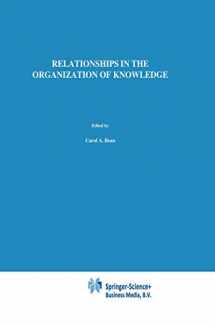
Relationships in the Organization of Knowledge (Information Science and Knowledge Management, 2)
Book details
Summary
Description
Relationships abound in the library and information science (LIS) world. Those relationships may be social in nature, as, for instance, when we deal with human relationships among library personnel or relationships (i. e. , "public relations") between an information center and its clientele. The relationships may be educational, as, for example, when we examine the relationship between the curriculum of an accredited school and the needs of the work force it is preparing students to join. Or the relationships may be economic, as when we investigate the relationship between the cost of journals and the frequency with which they are cited. Many of the relationships of concern to us reflect phenomena entirely internal to the field: the relationship between manuscript collections, archives, and special collections; the relationship between end user search behavior and the effectiveness of searches; the relationship between access to and use of information resources; the relationship between recall and precision; the relationship between various bibliometric laws; etc. The list of such relationships could go on and on. The relationships addressed in this volume are restricted to those involved in the organization of recorded knowledge, which tend to have a conceptual or semantic basis, although statistical means are sometimes used in their discovery.


We would LOVE it if you could help us and other readers by reviewing the book
Book review



